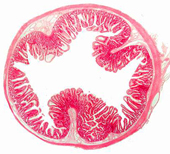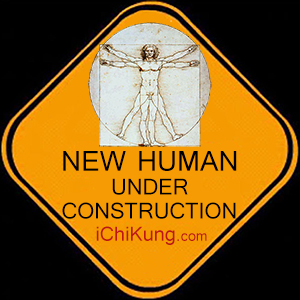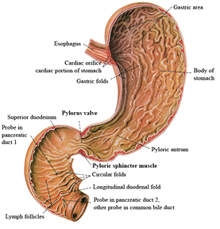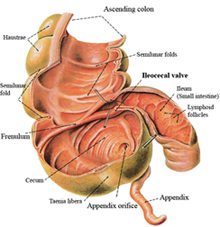SHANK PRAKSHALANA
WARNING: Side effects may include lower levels of stress and anxiety, increased productivity, higher sex-drive, drastic increase in functional lifespan, better memory, and a more pleasant personality.
Ayurvedic cleansing and detoxing of the digestive system in one (1) single day
Why do we need cleaning of our digestive system?


Irritable Colon Syndrome, constipation and gas are not topics we like to discuss. However, we know from our grandmothers that "Death begins in the Colon." If you don't believe it, ask any coroner. It is common to find that autopsies reveal intestines stuck with waste in 80% of cases.

Form, Function & Beauty
The colon is susceptible to a continuous accumulation of toxic substances found in food throughout our lives. Thick mucus that contaminate us are formed in the folds that cover the epithelial cells of several organs, especially in the organs of the elimination channel, acting as a threat to health by reducing nutrient absorption and interfering with digestion and poisoning the other elimination organs.
The intestinal villi is located in the epithelial cells of the intestine, extensions of approximately 0.5-1.5mm, whose function is to increase the area of the contact surface by increasing the absorption surface. These villi are wider in the duodenum than in the rest of the intestine. Villi health is important for optimal bowel function.
Under normal conditions, the immune system uses the elimination organs to maintain the body's internal balance. The body is constantly in a process of detoxification through the circulation of blood and lymph and the constant activity of detoxification organs such as the liver, kidneys, lungs, skin and digestive system.
The amount of "foreign" substances in the body, is in many cases greater than what the organs responsible for detoxification, can clean.
With the stress created by poor diet, lack of exercise, environmental toxins and processed foods, the conditions of the internal environment are altered and the immune system cannot defend us from diseases since it will be "busy" cleaning the body's toxins.
We are designed to evacuate as many times as we eat, that is, if we eat three(3) times a day, we must evacuate those three(3) times. Remember that we grow old from the inside out, and that is why it is necessary to keep our interior as clean as possible.
¿Puede la Muerte Comenzar en el Colon? Shank PrakShalana 3 Videos
~ Dr. Joel Robbins, M.D.
What is Shank PrakShalana?


It is a non-invasive Ayurvedic therapy of complete cleaning of the digestive system that removes impurities and accumulated toxins from the organs without the use of synthetic products, enemas or external equipment.
Cleaning begins at the mouth and ends in the rectum following the natural flow of the digestive system. Opens the pyloric and ileocecal valves allowing a fluid and natural wash. It uses the natural flow of the digestive system with approximately 0.9% saline water―the same salinity of its blood plasma―and 4 asanas are used.
Sodium/Potassium Cell Polarity Gradient
Sodium is an electrolyte, and it helps regulate the amount of water that's in and around the human cells. Sodium is absorbed from the gastrointestinal tract, always bringing water along with it. It is the major mineral in plasma, the fluid component of blood, and in the fluids that bathe the body's cells. Without enough sodium, all these fluids would lose their water, causing dehydration, low blood pressure, and death.
Sodium is also important because it helps maintain the right balance of fluids in your body. The kidneys help keep sodium at a healthy level. Normal sodium levels are usually between 136 and 145 millimoles per liter (mmol/L). The salinity of human blood is about 0.9%, whereas Sea Water has 3.9% concentration. Sodium chloride makes up around 0.4% of the body's weight.
Hyponatremia, drinking too much water—causes the sodium in your body to become diluted. When this happens, your body's water levels rise, and your cells begin to swell. This swelling can cause many health problems, from mild to life-threatening.
Hypernatremia, dehydration, not drinking enough fluids—causes the sodium in your body to become concentrated. This dehydration can cause central nervous system dysfunction, irritability, agitation, lethargy, somnolence, and coma. Other symptoms include increased thirst response in alert patients, orthostatic hypotension, and tachycardia.
Sodium is one of the body's electrolytes, which are minerals that carry an electric charge when dissolved in body fluids such as blood.
In his book Vaccines, Autoimmunity, and the Changing Nature of Childhood Illness Dr. Thomas Cowan, MD explains:
In 2001, a biologist named Gilbert Ling published a book called Life at the Cell and Below-Cell Level in which he argued that the sodium-potassium pump fails to explain the exclusion of sodium or the concentration of potassium—and therefore the pump can't be responsible for creating the charge across the cell membrane.
Science tells us that matter exists in one of three states: solid, liquid, or gas. Take copper, for example. Copper can exist as solid copper or copper ores, molten copper, or gaseous copper. Its state at a given time will be determined primarily by temperature, as well as by pressure, and by motion to a lesser extent. So it is with water. Depending mostly on temperature, water exists as ice, water, or steam, each with its own molecular pattern and arrangement.
Defining what state a substance is in no longer involves guesswork. It is easy to examine any substance with a spectrophotometer and come up with a precise assessment of the molecular configuration. Ice has a distinct molecular pattern, water has a different pattern, and steam yet a different pattern. So, how is it that water as it exists in a gel-like state has none of these patterns? It doesn't conform to liquid, solid, or gas molecular configurations. As Gerald Pollack pointed out in The Fourth Phase of Water, this is because water—and only water—can exist in a fourth state that is as molecularly distinct as the other three states. This fourth, or gel state, is the state of healthy intracellular water in mammalian cells. There is no liquid water in healthy human cells.
The formation of this intracellular gel in mammalian cells is similar to the formation of Jello. In fact, Jello is simply the trademarked name of gelatin, a protein produced from collagen when it is extracted from bones and connective tissues. The ingredients to make gelatin are simple: water and strongly hydrophilic proteins. To make it, you heat the mixture to add energy to the proteins. When these gelatin proteins are mixed with water and energy in the form of heat is added, the proteins unfold, flowing them to form bonds with the water. When this mixture cools, it forms the characteristic gel of fourth-phase water.
Consider human joints. In a state of health, the cartilage, bursae, and internal structures of joints have a form that allows for elective cushioning and prevents the bones from hitting or rubbing against each other. There is a negative charge to the fourth phase of water, so when one negatively charged bursa comes near another negatively charged bursa, they repel each other, ensuring a smooth gliding action with no bone-to-bone contact. Think of how an ice skater glides on ice. The surface of the ice contains a fine gel-like negatively charged layer, which prevents the skate from sticking to the surface. Or if you have ever licked an extremely cold surface that doesn't contain this gel-like negatively charged layer, you know that without the electrostatic and mechanical repulsion, two surfaces will stick, not glide, and your tongue will stick to the extremely cold surface. This is what's happening when someone has bone-on-bone contact, along with its attendant pain and dysfunction.
As Pollack has shown, all fourth-phase water has a negative electric charge and functions as a crystalline gel-receptive device that can absorb various forms of outside information, energy, and signals. Think of a radio receiver, which absorbs certain frequencies of radio waves and converts them into the sounds we hear through a radio. So the gel—that is, cytoplasm as it exists in a healthy fourth state—serves two functions:
- It creates the negative field of electrons that form a halo around each cell, and
- It acts as a receptive device allowing the cell to receive outside information, energy, and signals and convert them into something useful for the life of the organism.
This offers some insight into the role of ATP, which, as we have seen, is typically thought of as the currency of intercellular energy transfer. In the currency model, it is constantly being built, stored, and broken down to provide the energy needed for given cellular functions. I believe it's more accurate to view ATP as playing the same role that heat plays in the formation of gelatin: It binds to certain receptors on the intracellular proteins, which causes a transformational change allowing them to unfold and extend the proteins, so they can bond with water and, when cooled, form a gel with a robust negative charge that provides a protective halo—all without any pumping or outside energy required.
In a series of experiments, Gilbert Ling was able to show that because of the specific physical characteristics of this fourth-state intracellular gel—a meshlike gel structure inside the cell—the cell is precisely configured to "trap" the potassium (in the form of K+) inside the cell and exclude the sodium (in the form of N+). To picture this, imagine a screen on a porch window. For some reason, you want to let small mosquitoes into your porch, but you want to exclude bigger flies. You could create a mesh screen that would be just the right size to let mosquitoes in and exclude flies. This is the same way our intra- cellular gel works, except that in the case of our cells, the mesh itself actually binds to the potassium inside the cell.
Ling's discovery is a precise, self-sustaining system that uses no outside energy for accomplishing perhaps the most important function of the cell, which is to concentrate potassium inside the cell, while excluding sodium. This explanation provides a much more elegant, simple, sustainable, and economical model than that of the pump, which I find implausible notwithstanding its widespread acceptance.
This model of the mammalian cell allows us to understand common phenomena and molecular events differently. For example, it has been shown that the transcription and translation of DNA into proteins depends on which parts of the DNA are exposed or "unfolded" at a given time. Picture a long strand of DNA that consists of one hundred separate genes. Now imagine that as a result of being exposed to estrogen, which can bind with a site on the intracellular gel, what is needed is to make a hundred copies of gene 43. The estrogen signal subtly changes the structure of the crystalline matrix. The DNA embedded in this matrix changes the way it folds as a result of the change in the matrix in which it is embedded. This change in the folding of the DNA exposes gene 43, which is then transcribed and translated into the protein needed and which was the purpose of the estrogen signal. This changes the environment of the DNA and the protein factories of the cell so that the needed proteins are produced. Because of the nature of the fourth phase, these processes—which we call "life"—proceed with a minimum of energy and a maximum of ease.
Again, this is a seamless, energy-free, sustainable system that allows for life to flow with ease. Signals, in the form of hormones, ions, and nutrients, all create subtle changes in the intracellular matrix, which subtly changes in response to this exposure. A further beauty of this system is that due to the bipolar nature of water and its ability to form virtually unlimited binding sites, the human cell can be receptive to an unlimited number of outside influences. This explains why water is the foundation for life: It has unlimited flexibility and an unlimited ability to bind with outside influences. No pump system or protein-bound membrane can even remotely approximate this inherent ability of water.
This new way of looking at the cell, helps us understand the developing field of epigenetics. The conventional model of genetics is that the primary structure—that is, the sequence of base pairs that make up the DNA molecule—is everything. We have a trillion-dollar biotech industry devoted to sequencing DNA and finding out the makeup of our genes. What this new model demonstrates is that, while the DNA sequences that make up our genes are relevant, what is much more important is how and when each DNA sequence will be unmasked or unfolded so it can be copied. This process is what actually determines our health.
In Bruce Lipton's seminal book on epigenetics, The Biology of Belief, he showed that even with the most common genetic diseases, the outcomes were often largely determined by epigenetic influences, which might even include an individual's belief system. Let's say on chromosome 11 there is gene 20, and if you make a hundred copies a day of the protein derived from gene 20, you get the symptoms of multiple sclerosis. However, if you only make eighty copies of gene 20 per day, you're fine.
The determinant of the activity of the gene is not the gene itself; that is fixed. The determinant is whether it is exposed or unfolded, signaling the production of protein. This is a function of the crystalline gel, not of the DNA itself. In other words, the gel, not the DNA, determines the outcome. And water crystalline gel, through its almost infinite number of binding sites, is the perfect receptive vehicle, capable of binding with hormones, vitamins, nutrients, sunlight, sound, light, and—I believe—even more subtle energies such as belief and love. All of these influences can be shown to interact with and change the shape of the crystalline gel. This model then gives us an actual physiologic explanation of how our genes are influenced by what we think, feel, and say, and who we are around. Everything in our shared environment has a clear influence on who we are and how we function, even down to the details of how our genes are expressed.
This millenary method (Shank PrakShalana) that comes from India, is a yogic practice that considers the need of the human body to maintain the proper function of the Sodium/Potassium cell polarity gradient, in a condition of (-) negative ions and an alkaline body.
It is the most direct, simple and natural method of cleaning the entire digestive system from the mouth to the rectum―including the Colon―in a single day. Since all therapy is done in a single day, it produces the least amount of stress in your body. It facilitates the expulsion of stones from the liver and gallbladder.
By performing Shank PrakShlana you agree to continue using this technique for 7 times without any guidance before sharing and guiding another person. Thus, you will have enough personal experience and practice before transferring this valuable information.
It is a guided therapy by an experienced practitioner who has been practicing this technique since 1972.
It requires one toilet per person. It may take 3 to 6 hours evaluating each deposition until the water comes out completely clean. The therapy is done at home or at our facilities and includes your first meal.
BENEFITS OF SHANK PRAKSHALANA
- Detoxifies the organs of the digestive system
- Detaches destructive pre-established patterns
- Decreases body weight
- Decreases body fat
- Eliminates 95% of digestive problems such as:
constipation, colitis, gastritis, inflammation of the abdomen, gas or flatulence - Removes mud trapped for years from the bowel villi
- Eliminates large amount of bacteria
- Strengthens the immune system
- Increase digestive fire
- Increase mental clarity
- Emotional release and activation of emotions
- Cleansing of bacteria and intestinal fungi
- Cleansing of skin, hair, and clears the eyes
- Improves muscle tone
- Reduces metabolic age
- Recovers metabolic balance and digestive power
INVESTIGATIONS SHOW THAT BACTERIA PERFORM A ROLE IN COLON CANCER AND PARKINSON
Researchers saw the influence of intestinal bacteria in the formation of certain types of cancer, as well as in neurological diseases such as Parkinson's. One of these studies found that 89% of cancerous tumors removed from the right side of the colon were covered with a biofilm―a thick layer of dense colonies of bacteria. Interestingly, only 12% of tumors extracted from the left side of the colon had biofilms in them.
"The presence of these biofilms may represent a higher probability of colon cancer and could offer a new way to predict the risk of the disease in a person, [according to WebMD:] Like dental plaque and thick layer in stones, these biofilms can cover the mucous layer of the cells that line the colon, according to the background information of the study.
There, biofilms can cause inflammation and some non-cancerous intestinal diseases, said Dr. Cynthia Sears, a professor of medicine and oncology at the School of Medicine and Public Health at the University of Bloomberg Johns Hopkins. The reasons for the difference between the right side and the left side of the colon are unknown ... the risk of developing colon cancer may be five times higher in people with biofilms on the right side of the colon, compared to those without biofilms..."
Other recent research highlights the connection between carbohydrate-rich diets and colon cancer. As it turns out, certain bacteria that feed on sugar produce a chemical that activates the growth of tumor cells. There is a genetic mutation that has been linked to one in five cases of non-inherited colon cancer. This mutationprevents cells from repairing errors that occur during DNA replication.
This is known as the "uneven DNA repair system" and causes accelerated cell division. This research shows that carbohydrates and bacteria that feed on them can accelerate this dysfunctional process. Basically, the bacteria that feed on carbohydrates release a chemical forcing the colon cells, which do not have the ability to repair errors in the DNA, multiply uncontrollably, developing tumors. As reported by Science News.
"In countries where people have opted for Western-type diets high in refined sugars such as high-fructose corn syrup, the incidence of colorectal cancer has increased, says geneticist Scott Bultman of Chapel Hill University in North Carolina, who was not involved in the study. So far, the underlying connection between colon cancer and food is unclear.
'This study provides a good mechanism on how food is linked to colon cancer,' says Bultman ... 'If experiments on mice mimic human cancers, then eliminating the high-carb western diet could dissipate or prevent disease in many people,' says Bultman. Implementing a well-balanced diet, with less refined sugars and more fiber, is great for the microbiome and will probably have an effect on cancer predisposition."
Turning to research that focused on the influence of bacteria on Parkinson's disease, here people with Parkinson's disease have much less bacteria from the Prevotellaceae family than people who do not have the disease. What these bacteria do and the way they influence Parkinson's disease is still unknown. However, another family of bacteria called Enterobacteriaceae was linked to the severity of Parkinson's symptoms. It was found that Parkinson's patients with more severe balance problems and difficulty walking had higher levels of these bacteria.
REFERENCE:
Proceedings of the National Academy of Sciences December 23, 2014: 111(51); 18321–18326
webMD December 19, 2014
Cell July 17, 2014: 158(2); 288-299
Science News July 22, 2014
Science News July 22, 2014
Book Shank PrakShalana Guided Session:
|
$200 USD |
|
|
Credit Card (PayPal) |
Book Shank PrakShalana On-Line Guided Session (Skype):
|
$200 USD |
|
|
Cedit Card (PayPal) |
Refunds will not be available for registrants who choose not to complete the session.
Let us know Info@iChiKung.com to schedule your session.
Disclaimer: Please remember that One-on-One sessions in person or distant healing are not a substitute for professional care or psychiatric help if that is what is needed. Many physicians and psychologists recommend meditation in conjunction with standard therapies.
